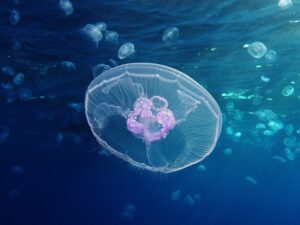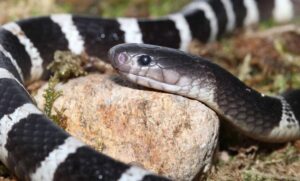Equipped with sharp claws, powerful jaws, and “god-given” deadly venom, these animals have become top-tier hunters. Their position on this countdown promises to bring some interesting surprises. Join KnowAllAnimals to explore the Top 10 Most Dangerous Predators in the World You Should Avoid in the following article!
1. Top 10 Most Dangerous Predators in the World You Should Avoid
In the animal kingdom, the most dangerous predators are creatures that both terrify and fascinate us. From sharp fangs and deadly venom to intelligent ambush techniques, here are the top 10 Most Dangerous Predators in the World that you should steer clear of.
1.10. Tarantula
The Tarantula is one of the most frightening animals on the planet. Not only is it a giant spider, but it’s also a cunning and skilled stalker, so much so that no small creature in its sights has a chance of survival. The tarantula’s hunting method is based on patience. It waits for unsuspecting passersby and snatches them without warning.
Due to its size, a body length of over 12cm (nearly 5 inches) with a leg span of over 70cm (27.5 inches) the tarantula can quickly overpower its prey and crush it with its massive fangs. Finally, it douses the victim’s body in digestive fluids and sips on this “delicious” liquid.
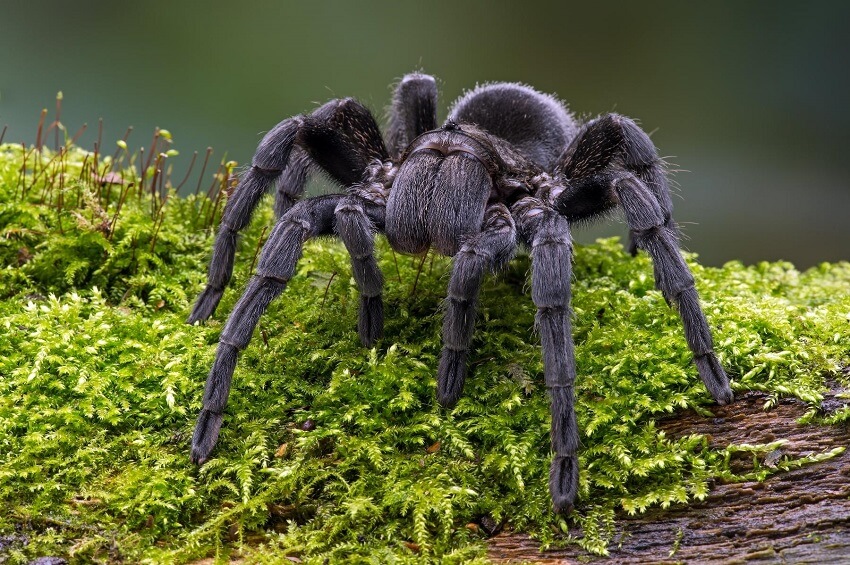
1.9. Black Mamba
The most terrifying animal in Africa must be the Black Mamba. This giant venomous snake is found throughout the southeastern part of the continent. Its name comes from the black skin inside its mouth, which is only revealed before it strikes. These snakes are generally passive but can become extremely aggressive when threatened.
They tend to strike their victims multiple times, injecting a mixture of neurotoxin and cardiotoxin. The mortality rate from a black mamba bite is… 100%. However, this number has been reduced thanks to the widespread availability of antivenom across the continent.
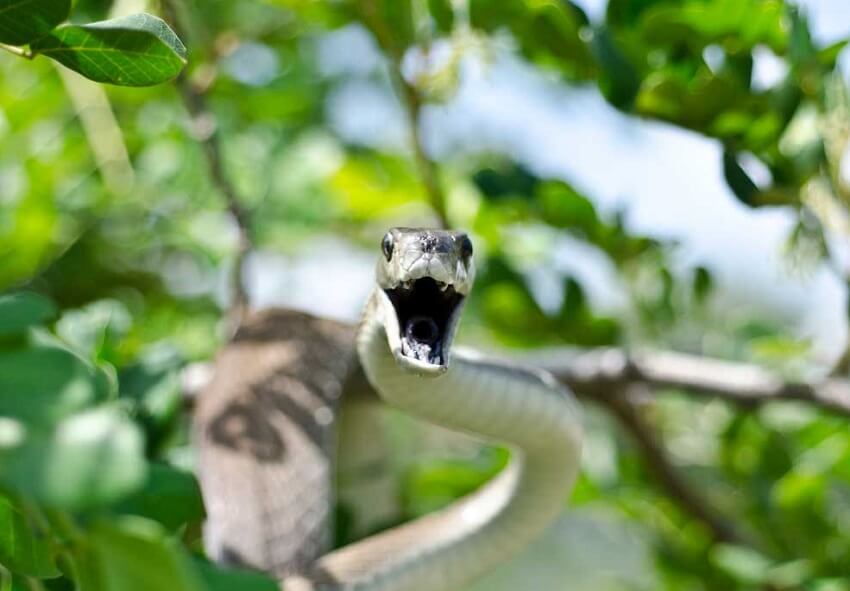
1.8. Piranha
Among all fish species, the Piranha is perhaps the most notorious. Just looking at its jagged teeth and powerful jaws is enough to send a chill down your spine. Piranhas are well known as ferocious predators that live in the freshwater rivers of South America. They hunt during the early morning or twilight, hiding in the water and waiting for small prey to pass by.
Then, without warning, they attack and devour their prey with unmatched viciousness in the freshwater community. In some cases, they will hunt in schools to take down larger prey, including horses, rodents, and even humans.
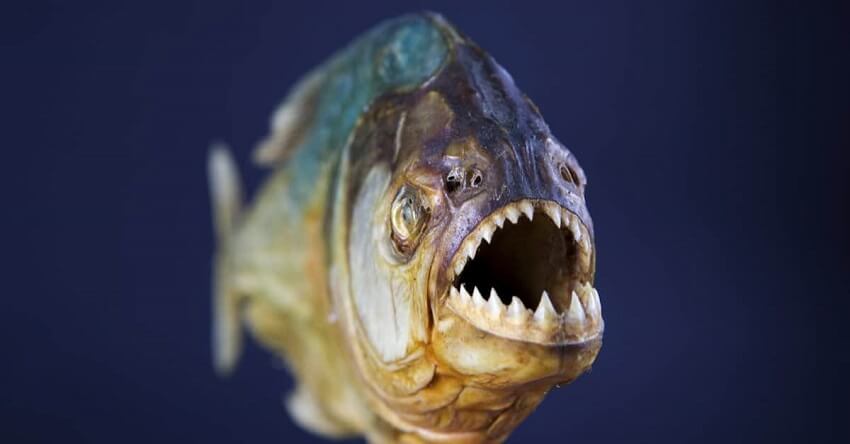
1.7. Gray Wolf
Most of the world’s top predators are completely solitary, relying primarily on their individual strength to take down prey. But for the Gray Wolf, a successful hunt depends on cooperation with its pack. A wolf pack’s signature attack is a relentless pursuit that forces the prey to run.
A lone prey animal is not only easier to take down but also safer than confronting an animal that is ready to fight back. The alpha male leads the chase while his packmates follow closely behind. Once the prey stumbles to the ground, the entire pack swarms it and finishes the job.
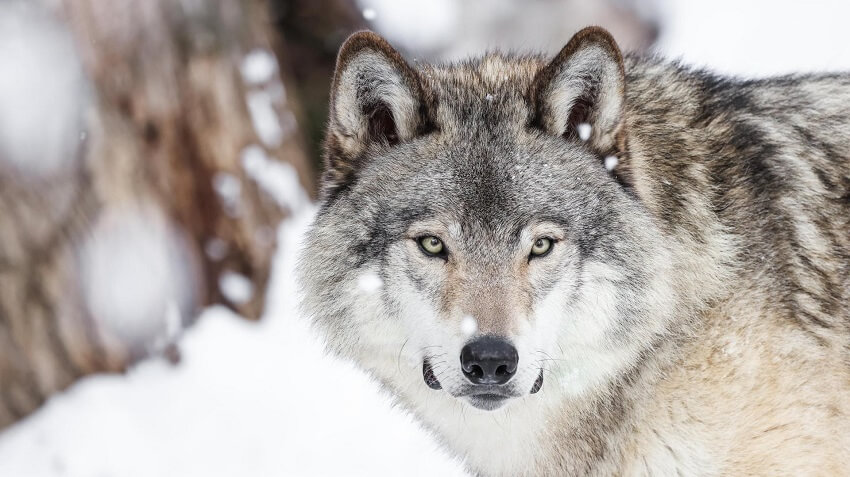
1.6. Komodo Dragon
The largest of all monitor lizards, the Komodo Dragon is a mighty reptile weighing up to 136 kg (300 lbs) and measuring over 3 meters (10 feet) long. This animal ranks sixth in terms of danger due to its speed, strength, and tenacity to overpower prey more than twice its size. It also has a venomous bite; any victim that survives a Komodo dragon attack will soon die from the wounds.
Komodo dragons primarily hunt by ambush, but they are also fast runners and good swimmers. Furthermore, their extraordinary hunting ability is complemented by their capacity to consume a large meal; they can eat an amount of food equal to half their body weight in a single sitting.
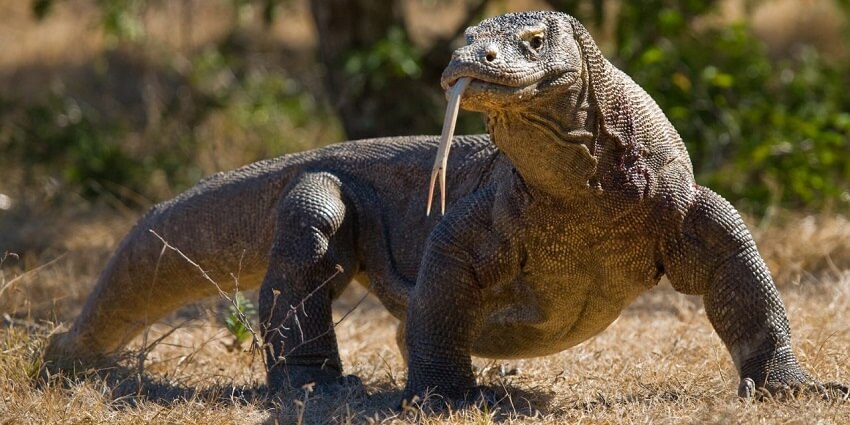
1.5. Crocodile
Nothing is more intimidating than a predator that hides silently underwater, camouflaged within its environment, observing its prey to plan a swift kill. Taking the fifth spot on our countdown is the Crocodile, a cunning and extremely brutal hunter. With an incredibly strong jaw and long, sharp teeth, crocodiles hunt a variety of species.
Some species, like the Nile crocodile, can take down very large prey such as zebras or buffalo. Their signature attack is to wait at the water’s edge where animals come to drink, then drag the unsuspecting animal underwater to begin tearing it apart until they get the pieces of meat they need for their meal.
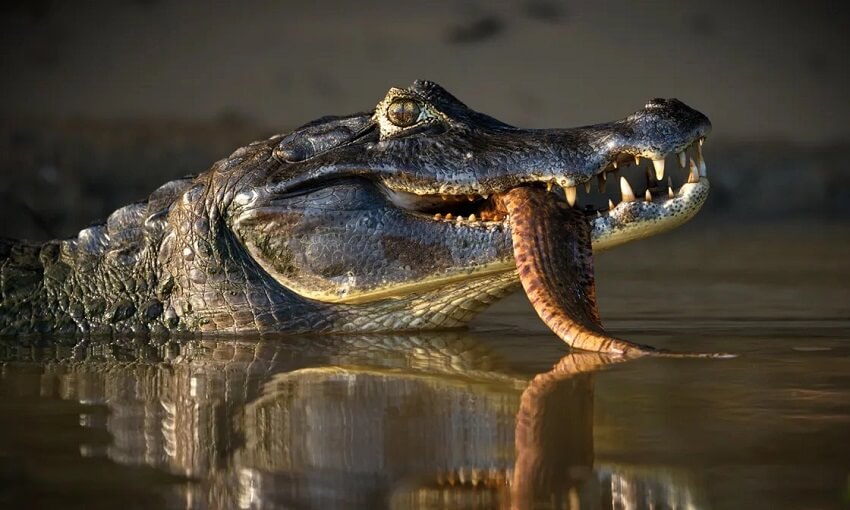
1.4. Killer Whale
True to its name, the Killer Whale is a formidable predator, combining remarkable skills with unrivaled physical power. It has several clever techniques in its hunting arsenal, which gives it one of the most varied diets of any marine predator. For example, they enjoy knocking seals and penguins off floating ice floes and then capturing them as they fall into the water. They also beach themselves to catch seals on the shore.
As highly social animals, killer whales tend to live and hunt together in groups of about ten. They can even hunt great white sharks!
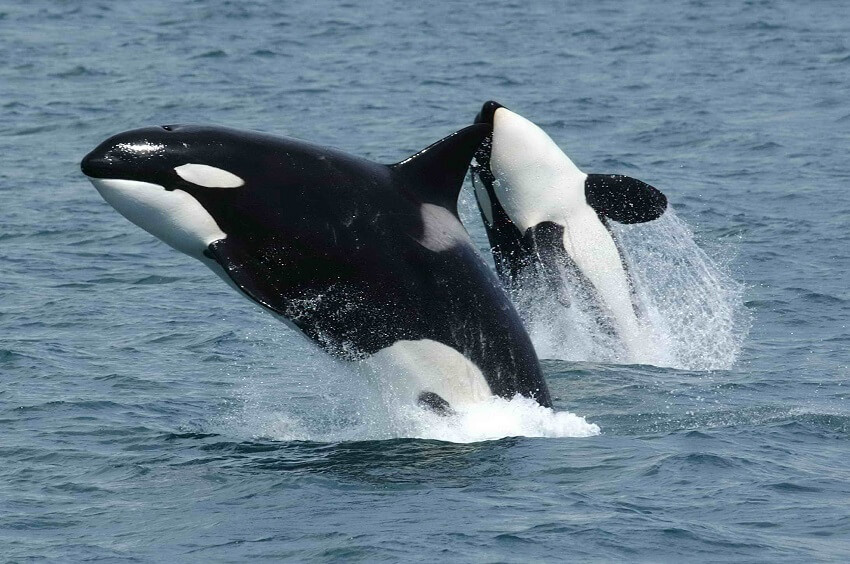
1.3. Grizzly Bear
The Grizzly Bear, also known as the brown bear, is arguably North America’s most fearsome animal. This powerful predator can stand about 2 meters (6.5 feet) tall and weigh over 360 kg (800 lbs). Its massive arms and paws can kill a person with a single swipe, and its strong jaws allow it to eat anything it wants, including large mammals. The grizzly bear is also a fast runner and a good swimmer.
Encountering this species in the wild would be a painful experience. The best response is to stand still and never run away. This species can reach speeds of over 65 km/h (40 mph), and running might trigger it to chase you.

1.2. Lion
Dubbed the “king of the jungle,” Lions hunt even the largest prey, such as buffalo and wildebeest. The near-perfect success of these predators is due to a combination of skills. Lions live in prides, and all members hunt together.
Young cubs quickly learn hunting skills by playing and fighting with each other, a behavior that also determines their roles in the hunt. A lion’s hunting success rate is only 1 in 5, but their predatory abilities are highlighted when we consider their prey, all of which are large animals capable of putting up a fierce fight.
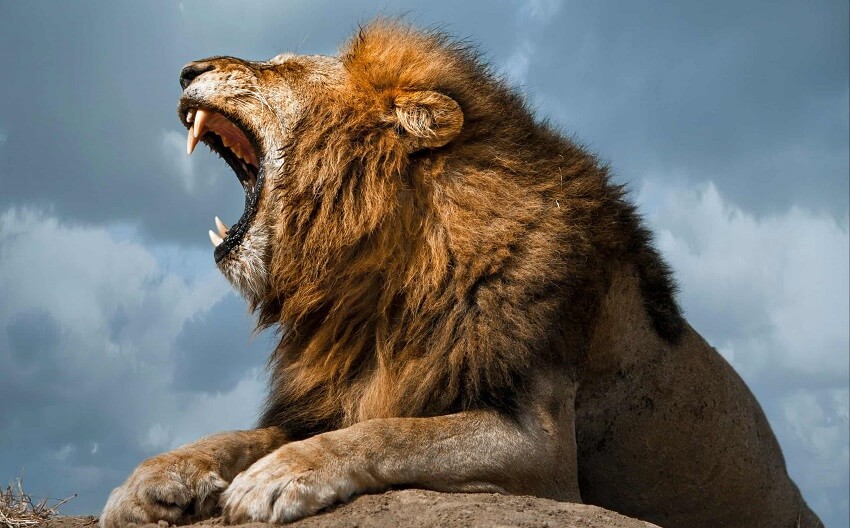
1.1. Great White Shark
Any animal unfortunate enough to fall into the sights of a Great White Shark has virtually no chance of survival. The great white shark takes the top spot on this countdown due to its superior hunting ability. With a streamlined body and powerful jaws, the great white shark is an incredibly strong animal: it’s a fast swimmer and an agile marine athlete that can launch itself out of the water to ambush prey.
Great white sharks also have multiple rows of sharp, serrated teeth, with each one immediately replaced after it’s lost. In fact, a single shark can go through more than 50,000 teeth in its lifetime. The great white shark often begins its attack with a fatal bite, then waits for the victim to weaken from the wound before eating it—a strategy that allows it to enjoy its meal safely.
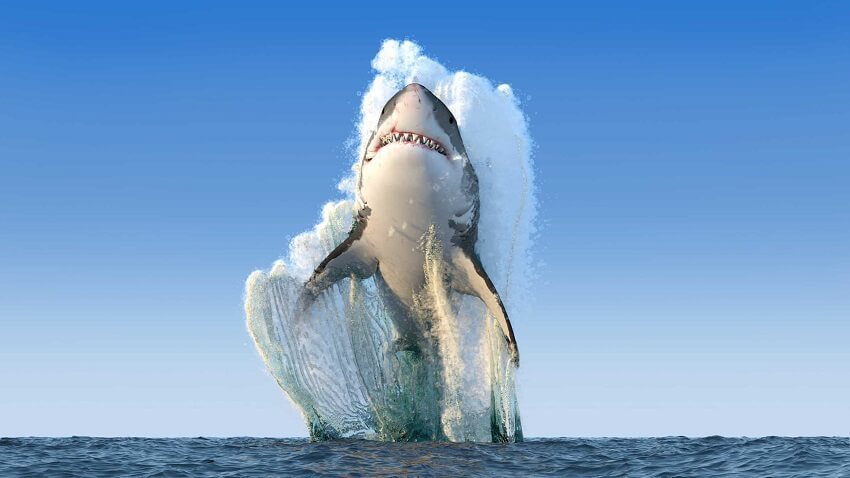
2. FAQs
1. What animal holds the number one spot on the list of most dangerous predators?
The top spot belongs to the Great White Shark, with its powerful body, sharp teeth, and incredible hunting speed.
2. Which predator lives in packs and uses collective hunting strategies?
The Killer Whale is a highly organized predator that lives in pods and uses sophisticated cooperation to take down seals and penguins with special hunting techniques.
3. Who is the most formidable predator living on land?
The Grizzly Bear is powerful, massive, and agile; it can take down prey with a single swipe.
4. Which giant reptile possesses both size and venom?
The Komodo Dragon, the largest monitor lizard on the planet, has incredible speed and strength, along with a powerful venom that causes its victims to die quickly.
5. Why is the Piranha considered a dangerous freshwater predator?
Piranhas are known for their razor-sharp teeth and pack-hunting instincts. They can launch a surprise attack and tear their prey to shreds in a matter of seconds.
On this journey to explore the Most Dangerous Predators in the World, we not only get to admire the wild beauty of nature but also gain a deeper understanding of the sophistication and ferocity of survival instincts. Whether on land or in water, these animals possess superior hunting skills. Understanding and respecting them is how we can live more safely alongside nature. If you found this content from Know All Animals helpful, please share it to spread awareness about wildlife protection!


